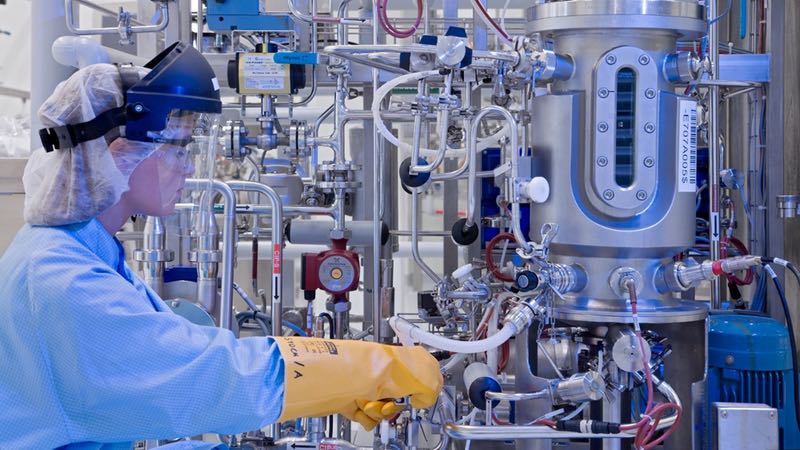Pharmaceutical Regulations, Organizations and Quality Standards you Must Know to Make Safe Medicines and Medical Devices
By: Donagh Fitzgerald B.Prod Eng and Gerry Creaner B.Chem Eng. Last Updated: March 2024

The pharmaceutical manufacturing and medical device manufacturing industries are regulated sectors, meaning that what goes on inside the factory walls are subject to the law of the land. In addition to government regulations, the sector also uses a number of quality standards, systems and industry frameworks to help make safe medicines and vaccines at an affordable cost without entailing excessive regulatory oversight.
Let’s take a look.
- Why do we need Pharmaceutical Regulation?
- Good Manufacturing Practice (GMPs)
- Food & Drug Administration (FDA)
- EMA – European Medicines Agency
- PMDA – Pharmaceuticals and Medical Devices Agency – Japan
- ICH – International Conference on Harmonisation
- PIC/S – Pharmaceutical Inspection Co-operation Scheme
- World Health Organization (WHO)
- ISO – The International Organization for Standardization
- GMP vs ISO
- What are GxPs?
- ISPE – International Society of Pharmaceutical Engineers
- Medicines & Healthcare products Regulatory Agency (MHRA)
- ASTM – International
Also, if you are interested in a new career in pharma or want to upskill for a promotion, check out our pharmaceutical online courses.
Why do we need Pharmaceutical Regulation?
The controls and checks put in place to control pharmaceutical manufacturing are far more stringent than other sectors such as the food industry.
Why is this the case?
When we take medicines and ingest them or inject them directly into our bloodstream, we bypass the many defence mechanisms our body has from protecting us against harm and leave ourselves terribly exposed to the slightest manufacturing error or impurity within that medication.
And so, the public, patients and the medical profession need to be confident that:
- the manufacturer produced the medicine to a high level of precision and safety and has taken every step to ensure this is the case.
- no shortcuts have been taken in the manufacturing process or the sourcing of ingredients that could affect the strength, quality and purity of the final products.
However, it’s impossible for the medical professional, much less the consumer, to tell if a pharmaceutical product supplied by the manufacturer is safe by just looking at the tablet, or if it contains what it is supposed to contain. Furthermore, even the tiniest changes to the manufacturing process can have potentially deadly consequences for patients.
The major burden for ensuring consumer safety lies at the manufacturing stage, where it is essential that effective regulation ensures the medicines are safe and effective.
Good Manufacturing Practice (GMPs)
Good Manufacturing Practice (GMPs) are a set of rules that have the force of law and require that manufacturers, processors, and packagers of both drugs and medical devices take steps to ensure that their products are safe, pure and effective.
GMPs cover all aspects of production from the raw materials, factory and equipment, to the training and personal hygiene of staff. Detailed written procedures are essential for each process that could affect the quality of the finished product. There must be systems to provide documented proof that correct procedures are consistently followed at each step in the manufacturing process every time a product is made.
The United States, Europe, Japan, China, India, the UK, World Health Organisation (WHO), etc all have their own versions of GMPs and the particular regulation the manufacturer will be subject to, depends on the location of the manufacturing plant and the location of the market the medicine or medical device will be supplied to for patients.
But it’s not just GMP regulation we need to consider. The sector also uses quality systems, quality standards and guidance frameworks from other industry bodies and international organisations.
Let’s take a look at the most important regulatory frameworks, the quality standards, quality systems and industry frameworks along with the organizations responsible for them.
Food & Drug Administration (FDA)
The Food and Drug Administration (FDA or USFDA) is an agency of the United States Department of Health and is responsible for protecting the US public and promoting public health through the regulation and supervision of food safety, tobacco products, dietary supplements, prescription and over-the-counter pharmaceutical drugs (medications), vaccines, biopharmaceuticals, blood transfusions, medical devices, electromagnetic radiation, cosmetics, emitting devices (ERED), and veterinary products.
In the case of pharmaceutical and medical device products:
- The FDA is responsible for inspecting manufacturers worldwide for compliance with cGMPs for any products produced for supply into the United States.
- The FDA issues guidance for manufacturers in the Code of Federal Regulations, Current Good Manufacturing Practice for Finished Pharmaceuticals.
- These guidance documents do not bind companies to follow a single way for manufacturing their medicines and vaccines, as there is more than one way to manufacture safe medicines, rather they have to confirm that the approach they use is acceptable and that it fulfils the requirements of the regulations.
Check out the following links to these guidance documents
Part 211 Current Good Manufacturing Practice for Finished Pharmaceuticals
EMA – European Medicines Agency
The European Medicines Agency (EMA) is the decentralised agency of the European Union (EU), set up in 1995. They are tasked with evaluating, supervising, and monitoring the safety of pharmaceutical products produced for use within the EU. EU regulations require all pharmaceutical manufacturers comply with EU Good Manufacturing Practices (GMPs) if they want to supply products to the EU.
- Manufacturers and importers must be authorised and registered by a competent authority from a member state.
- Manufacturers and importers are regularly inspected by an EU competent authority or other approved authority to check compliance with the EU GMPs. This applies wherever the manufacturer is located.
- The frequency of inspection is based on a risk assessment and in addition, the local national competent authority must supply written confirmation that each batch of product conformed to GMPs.
- Where products are imported by a separate company the importer is responsible for ensuring compliance with GMP.
Pharmaceuticals and Medical Devices Agency (PMDA) – Japan
The Pharmaceuticals and Medical Devices Agency (PMDA) is an independent institution responsible for ensuring the safety, efficacy and quality of pharmaceuticals and medical devices in Japan.
In the case of pharmaceutical and medical device products the PMDA is responsible for:
- Auditing of manufacturers to ensure they conform to Good Manufacturing Practice (GMP) and have a suitable Quality Management System (QMS)
ICH – International Conference on Harmonisation
The International Council for Harmonisation of Technical Requirements for Pharmaceuticals for Human Use (ICH) was formed in 1990 with the goal of bringing together the pharmaceutical industry and regulatory bodies of the USA, Europe and Japan (the major markets of the major companies) to drug regulation from a scientific and technical perspective.
As the industry became more globalised, the ICH has adapted to promote rationalisations and harmonisation of practices to ensure that pharmaceutical products are of high quality, effective and safe, and that registration of these products is efficient across the world.
At a practical level it allows a manufacturer in American to sell its products in Europe without the European regulatory authority having to audit the manufacturing plant in America, and vice versa, as the regulatory bodies will in many cases accept the audit findings of the other auditing bodies. This reduces excessive duplicate regulatory oversight and by doing that makes medicines more affordable and more affordable medicines can reach more people.
The organisation has developed a number of guidelines such as:
- ICH Q7 – Good Manufacture Practice guidelines for Active Pharmaceutical Ingredients
- ICH Q8 – Pharmaceutical Development
- ICH Q9 – Quality Risk Management
- ICH Q10 – Pharmaceutical Quality Systems
- ICH Q11 – Development and Manufacture of Drug Substances
PIC/S – Pharmaceutical Inspection Co-operation Scheme
PIC/S is a non-binding, informal cooperative arrangement between regulatory authorities in the field of Good Manufacturing Practice (GMP) of medicinal products for human or veterinary use. It is open to any regulatory authority having a comparable GMP inspection system and currently is made up of 54 participating authorities coming from all over the world (Europe, Africa, America, Asia and Australasia).
PIC/S aims at harmonising inspection procedures worldwide by developing common standards in the field of GMP and by providing training opportunities to Inspectors. It also aims at facilitating cooperation and networking between competent authorities, regional and international organisations and help increase mutual confidence.
(PIC/S) publish a suite of regulatory guidelines and recommendations online.
See PIC/S GMP Guide
World Health Organization (WHO)
The World Health Organization (WHO) is a specialized agency of the United Nations (UN) that is concerned with international public health. It was established on 7 April 1948, with its headquarters in Geneva, Switzerland. WHO is a member of the United Nations Development Group.
WHO produces its own guidance document on Good Manufacturing Practices
The International Society for Pharmaceutical Engineering (ISPE) is a not-for-profit industry trade group for pharmaceutical science and manufacturing professionals. It has 25,000 members in more than 90 countries. The ISPE provides pharmaceutical industry professionals with opportunities to develop technical knowledge, exchange practical experience and collaborate with global regulatory agencies and industry leaders.
The ISPE produces a number of important documents and frameworks widely used within the pharmaceutical manufacturing industry such as:
ISPE Baseline Guide Vol 5: Commissioning and Qualification
The ISPE Baseline Guide Vol 5: Commissioning and Qualification provides a guide on the implementation of a science and risk-based approach for the Commissioning and Qualification (C&Q) of pharmaceutical manufacturing facilities along with its systems, utilities, and equipment to demonstrate that they are fit for purpose.
Good Automated Manufacturing Practice (GAMP)
Good Automated Manufacturing Practices is a set of guidelines for manufacturers and users of automated systems in the pharmaceutical industry. One of its main goals is to make sure (and document) that a computer-based system will consistently produce information that meets a set of predefined requirements. This guide provides a framework to help validate electronic data for systems such as:
- Laboratory Information Management System (LIMS)
- Clinical Trial Monitoring Systems
- PLC for Controlled Packaging Equipment
- Supervisory Control and Data Acquisition (SCADA)
- Distributed Control System (DCS)
- Chromatography Data System (CDS)
- Enterprise Resource Planning (ERP) Systems
- Manufacturing Execution System (MES)
- Batch Record System
- Building Management Systems (BMS)
- Spreadsheets
These industries use computer systems to operate and record a range of manufacturing processes so it’s critical that they can be relied upon to produce data consistently and store electronic data safely. GAMP has enjoyed the support of numerous regulatory authorities and is now a recognised good practice worldwide.
This is an international non-governmental organization based in Switzerland made up of national standards bodies that develops and publishes a wide range of proprietary, industrial, and commercial standards.
ISO produces a number of ISO 9000 quality standards and frameworks that are used worldwide and are the world’s best-known quality management standard for companies and organizations of any size.
ISO 9001:2015
ISO 9001 is the world’s most recognised Quality Management System (QMS) standard. Its purpose is to help organisations meet the needs of their customers and other stakeholders more effectively. This is achieved by building a framework to ensure consistent quality in the provision of goods and/or services.
ISO 13485:2016
ISO 13485:2016 is the standard for a Quality Management System (“QMS”) for the design and manufacture of Medical Devices.
ISO 14971:2019
ISO 14971:2019 provides manufacturers with a process to identify medical device hazards, assess risks, control risks, and monitor the effectiveness of risk controls throughout the product life cycle.
GMP vs ISO
While GMP and ISO standards are often compared, the two standards are not the same and are not really trying to do the same thing.
GMP is a product quality standard that has the force of law behind it. Its focus is on getting product efficacy, (i.e it works) manufactured to a high quality standard for the most important customer of GMPs – the patient.
ISO 9001 is more about running the whole business, a goal of which will be producing products of the right quality – but it has other aims too. Whilst GMP focuses on production and quality control – ISO focuses on all departments and processes of an organisation.
Another key difference is that GMPs are government regulations in some jurisdictions (for example, Europe). If your company doesn’t strictly follow GMPs, the local regulatory authority can compel the company to make changes, recall products, or even halt production.
What are GxPs?
You may often hear the term GxPs referenced in discussions on GMPs and may be wondering what is the difference between GMPs and GxPs.
GxPs is an umbrella term for a number of “Good Practice” regulatory frameworks which includes “GMPs”. These frameworks were created to make sure that high levels of quality and safety are built into every step from drug development, manufacture and all the way to distribution and storage as we don’t just want only the manufacturing process to be safe. We need these other steps and process to be safe as well. These include:
- Drug discovery: Good Laboratory Practice (GLP)
- Drug trials: Good Clinical Practice (GCP)
- Manufacturer: Good Manufacturing Practice (GMP)
- Distribution: Good Distribution Practice (GDP)
- Storage: Good Storage Practice (GSP)
And collectively, all these standards are known as GxPs.
The Medicines & Healthcare products Regulatory Agency (MHRA) is an executive agency of the UK’s Department of Health and regulates all medicines, medical devices and blood components for transfusion across the UK.
The MHRA job is to make sure that:
- products manufactured for use in the UK meet quality and efficacy standards
- that supply chains are safe and secure
- the UK public and healthcare professionals are well informed about the risks and benefits of medicines and medical devices.
The MHRA works closely with similar agencies in other countries to try to promote standardisation and input into national and international regulatory frameworks. Finally, it also works to support innovation and research and development that benefits public health.
Check out following links to these guidance documents
Good manufacturing practice and good distribution practice
ASTM – International is an international standards organisation that develops and publishes technical standards for a wide range of materials, products, systems, and services.
Standard Guide for Specification, Design, and Verification of Pharmaceutical and Biopharmaceutical Manufacturing Systems and Equipment. This is a Good Engineering Practice Guide commonly referred to as ASTM E2500, used within the pharmaceutical and medical device manufacturing industry.
Check Out Our Most Popular Programs and Courses
- Good Manufacturing Practice (GMP) Training Course
- Equipment Validation Training Course – For Starter Validation, CQV and C&Q Roles
- Pharmaceutical Validation Training Course – For More Senior Validation and CQV Roles
- Computer Systems Validation Training Course
- View All 13 Online Pharmaceutical Courses
About the Authors
Donagh Fitzgerald
Head of Marketing & Product Development
Mechanical/Production Engineer
Donagh looks after the marketing and product development including the training and pedagogical elements of our programs and makes sure that all GetReskilled’s users can have a great online learning experience. Donagh has lived and worked in many countries including Ireland, America, the UK, Singapore, Hong Kong and Japan. Donagh has also served as the Program Manager for the Farmleigh Fellowship based out of Singapore.
Donagh holds Degrees in Production Engineering and Mechanical Engineering from South East Technological University, Ireland.
Gerry Creaner
President
Senior Lecturer with GetReskilled
Gerry Creaner has over 40-years of experience in the Life Sciences Manufacturing industry across a range of technical, managerial and business roles. He established a very successful engineering consultancy prior to founding GetReskilled, an online education and learning business, with offices in Singapore, Ireland and Boston (USA), focussed on the manufacture of safe and effective medicines for the public.
He is also a founding Director of two Singapore based philanthropic organizations, the Farmleigh Fellowship and the Singapore-Ireland Fund, both of which deepen the well established and historical Singapore – Ireland relationship and deliver long-term benefits to both countries.
Gerry has an undergraduate degree in Chemical Engineering (UCD, 1980) and an MSc (Management) from Trinity College Dublin (2003) and is currently doing research for his Ph.D.

